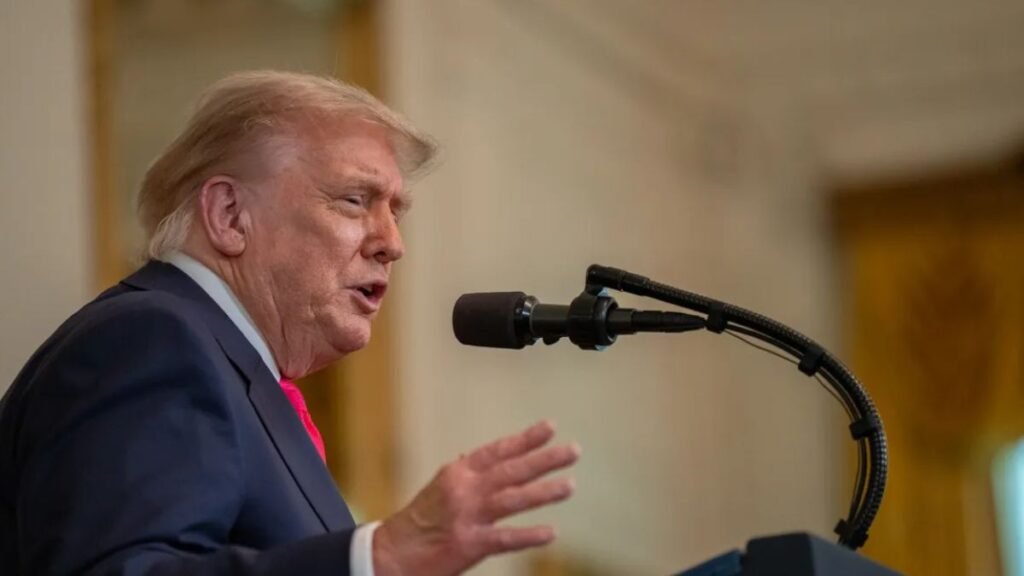US President Donald Trump’s recent statement about resuming nuclear testing has triggered widespread concern among strategic and security analysts. Although Washington later clarified that no actual nuclear explosions were planned, the announcement reflects a significant shift in America’s approach to nuclear policy.
The Trump administration’s record shows a wide range of positions, from proposing trilateral arms control among the United States, Russia, and China, to reviving the idea of testing long prohibited by international consensus. This development highlights a new nuclear reality defined by sharper rivalries and rising uncertainty.
A Shifting Nuclear Landscape
The world is witnessing the emergence of a new nuclear age. Russia and China are rapidly modernizing their nuclear forces, while North Korea continues to defy global norms with repeated nuclear tests. For the first time, the United States faces two peer-level competitors in the nuclear domain. Moscow has warned of “reciprocal measures,” and Beijing has urged Washington to maintain the global moratorium on nuclear testing for the sake of stability. The nuclear order that the United States helped create after the Second World War is now under visible strain.
From Order to Instability
The global nuclear system has long rested on three key pillars: deterrence, arms control, and non-proliferation. Each of these is now weakening. The Ukraine war has deeply damaged US-Russia relations and dealt a blow to the arms control architecture. Treaties that once helped restrain competition are either suspended or fading away. Meanwhile, countries such as Iran and North Korea are more confident in pursuing their own nuclear ambitions. Even US allies are questioning whether Washington can continue to guarantee their security and uphold non-proliferation norms.
A Tripolar Nuclear Balance
The triangular dynamic among the United States, Russia, and China has reshaped the global strategic environment. This emerging tripolar nuclear structure is characterized by a mix of deterrence, competition, and uncertainty. Both Moscow and Beijing have shown readiness to discuss nuclear warfighting concepts, which blurs the line between conventional and nuclear conflict. This evolution complicates America’s strategic calculations and weakens the foundations of global stability.
The Future of the Comprehensive Test Ban Treaty
The Comprehensive Test Ban Treaty, signed in 1996 to prohibit all nuclear explosions, is one of the most important but least enforced global agreements. Though it never entered into force, it symbolized the world’s collective commitment to restraint. Any American move toward renewed testing would undermine that commitment and signal a retreat from responsibility. Russia’s decision to withdraw its ratification in 2023, following its conflict with Ukraine, and China’s continued refusal to ratify the treaty, already threaten its credibility. If the United States also abandons restraint, the fragile balance that supports non-proliferation may collapse entirely.
Signaling or Provocation
Supporters of Trump’s idea argue that the threat of resuming testing could serve as a powerful signal of deterrence at a time when adversaries are upgrading their arsenals. Critics, however, warn that such signaling could be dangerously misinterpreted. Instead of encouraging cooperation, it might trigger a new wave of competition. The shift from a cooperative security framework to one based on zero-sum rivalry would make global stability more fragile and unpredictable.
The South Asian Equation
The implications of a renewed nuclear race extend well beyond the major powers. In South Asia, the nuclear triangle of China, India, and Pakistan remains one of the most delicate and unstable regions in the world. China’s growing nuclear capabilities have already raised deep concerns in New Delhi. If Beijing resumes testing, India may feel compelled to reconsider its own voluntary moratorium. The 2020 Galwan Valley clashes marked a turning point in India-China relations, eroding trust and reducing engagement. Any new Chinese tests would be viewed by India as a direct strategic provocation.
India’s Strategic Balancing Act
For India, any move toward nuclear testing involves more than military calculation. It carries serious diplomatic implications. India has long projected itself as a responsible nuclear power and gained international acceptance through the Nuclear Suppliers Group waiver, which allows it to participate in civilian nuclear trade. Reversing its moratorium could jeopardize this image and strain key relationships. Pakistan, meanwhile, continues to test new delivery systems but faces economic and technological limits that restrict its capacity for escalation. Its reliance on tactical nuclear weapons provides little deterrent value against a larger and more sophisticated Indian arsenal.
Technology and the New Face of Deterrence
Modern deterrence is being transformed by rapid technological advancement. New weapons blur the boundary between conventional and nuclear warfare. Russia’s Burevestnik, a nuclear-powered intercontinental cruise missile, and the Poseidon, an underwater drone capable of carrying nuclear warheads, demonstrate how the nature of nuclear competition is evolving. China’s efforts to merge its conventional and nuclear capabilities follow the same pattern. In this context, even the idea of US nuclear testing could push global deterrence to its most dangerous limits.
An Uncertain Future
The nuclear order built over the past seven decades is facing its toughest test since the end of the Cold War. What began as a simple political statement in Washington has evolved into a reflection of deep strategic instability. The triangular competition between the United States, Russia, and China is becoming increasingly volatile, and regional flashpoints such as South Asia could become dangerous catalysts. If the world’s leading powers continue to drift toward renewed testing and arms expansion, the fragile principles of restraint and stability that have kept nuclear peace may soon unravel. The coming years will reveal whether global leadership can revive cooperation and rebuild trust or whether the world will enter an age of deterrence without discipline.
Read More: From Hair Salons to Luxury Apartments: How China’s Secret Sex Industry Works




